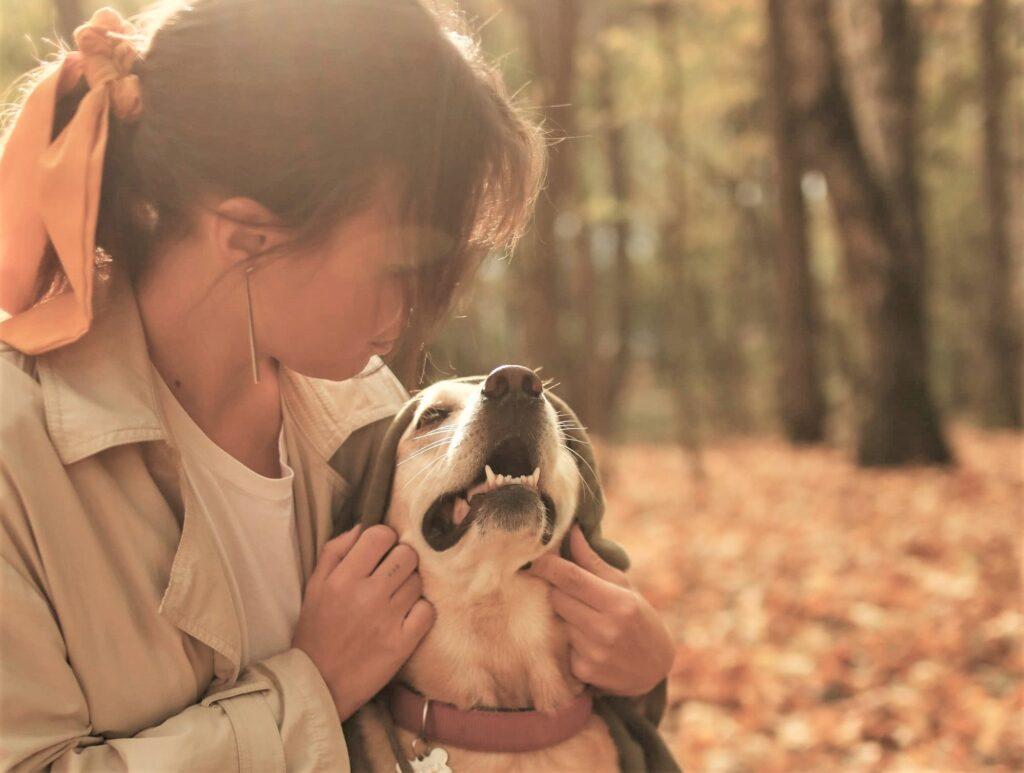Spring is a dynamic time of year. The quiet hum of the furnace has now been replaced with loud claps of thunder. Shining more brightly, the sun in Spring is essentially fuel for lightning which expands air creating those loud scary explosions. Intense temperature changes bring on tornado sirens, high wind and sheets of rain. Weather sounds can cause dogs’ stress levels to skyrocket. Those unexpected booms can be terrifying for them and may leave them feeling they have no other choice, but to run for cover.
A thunderstorm can reach your dog before reaching you.
According to the American Kennel Club, a dogs’ sensitivity to thunderstorms goes beyond the alarming noises. They may also be sensitive to changes in the air pressure and static electricity. This could create a tingling sensation throughout their fur making them feel strange and uncomfortable. As they sniff around the house they realize their nose creates a shock sensation that can cause pain. Quickly a thunderstorm can turn into a real storm phobia for your loving pup.
Dogs are set up to experience sound differently than us.

Hearing is the last sense a puppy will develop. Deaf until about 3 weeks old they make gigantic leaps and bounds toward fully absorbing the world around them. At birth their ear canals are not fully developed purposely to protect their underdeveloped inner ears. By age 6 months, a puppy will have fully developed its ears and ability to rotate them 180 degrees. The 18 ear muscles for funneling sound amplifies the world to be a much bigger place than what we hear.
A dog’s auditory system is incredibly effective. Low frequency sounds preceding a thunderstorm your dog most likely will hear hours before the storm arrives. It is no surprise since the average dog’s hearing frequency ranges from approximately 40 to 60,000 Hz while a human range is between 20 and 20,000 Hz. In general a dog’s hearing is four to five times more powerful than ours. Their long ear canals help them to hear storm sounds up to 40 miles away under the right conditions.
Is your dog sensitive to Springtime sounds?
Dogs cannot express their fears in words. Understanding the early signs is crucial before their fear gets out of control.
Symptoms of canine storm anxiety include:
- Lowered ears and tail
- Pacing or attempts to leave
- Hiding
- Destructive behavior
- Whining or howling
- Trembling or shivering
- Bolting through the house
- Loss of bladder control
Help your dog cope with Springtime noise.

Fear is an emotional state dogs can feel when threatened or triggered by loud noises. They are having an honest response that is involuntary. Managing storm fear requires early intervention. The goal is to catch mild anxiety quickly. Changing their emotionally stressed outlook to neutral and content is the goal. They will need your help to see them through it.
Never punish a dog for fearful behaviors. Be easy going around them. Switch the focus on an activity that is fun and relaxing. If your dog would rather lay down in a place they feel secure; give them their own space. Close the blinds and dampen the outside noise with a radio or television. Your dog will be evaluating your emotional state so remember to remain cool, calm and collected.
How can I prepare my dog for the first Spring storm?
Early introduction to noise can be very beneficial. Desensitizing your dog to loud noises like thunderstorms is the very best way to prevent a noise phobia.
Slowly begin by exposing your dog to thunderstorm videos. Gently increase the sound and let it play in the background while engaging in playful activities with your dog. Continue this for a few weeks or periodically monthly.
Games that involve noise will reassure your dog that noises are alright. Bubble wrap for instance, can be a useful tool. Begin by popping the bubble wrap in another part of the house. Slowly walk closer to your dog letting them know “it’s okay”. Let your dog smell the bubble wrap and reinforce the normality of unexpected sounds.
Are there sounds that can help soothe my dog?

Just like humans, dogs too benefit from the sound of a nice melody. Depending on the genre, dogs seem to enjoy music. Although “Who Let The Dogs Out” may be a hip tune by Snoop Dogg and might be your first guess, others are proven to be better. Studies have revealed that classical, reggae and soft rock music had the most calming effect on dogs. Experts explain the feel-good neurotransmitter dopamine in the brain is released; resulting in lower levels of cortisol, known as the stress hormone.
Right now is the perfect time to create a playlist specifically for your pup. Spend an afternoon together introducing your dog to some comforting tunes. When Springtime comes crashing in with more than just flowers, you’ll both be ready to weather the storm.
Works Cited
Bowman, A., et al. “’The Effect of Different Genres of Music on the Stress Levels of Kennelled Dogs’.” Physiology & Behavior, Elsevier, 14 Jan. 2017.
Driver, Saige. “Dog Thunderstorm Anxiety: How to Help.” American Kennel Club, American Kennel Club, 26 May 2021.
Falk, Tim. “Can Dogs Hear Lower Frequencies than Humans? – Wag!” WagWalking, Wag!, 6 Mar. 2018.
Article by Guest Contributor: Sarah Ihrig
